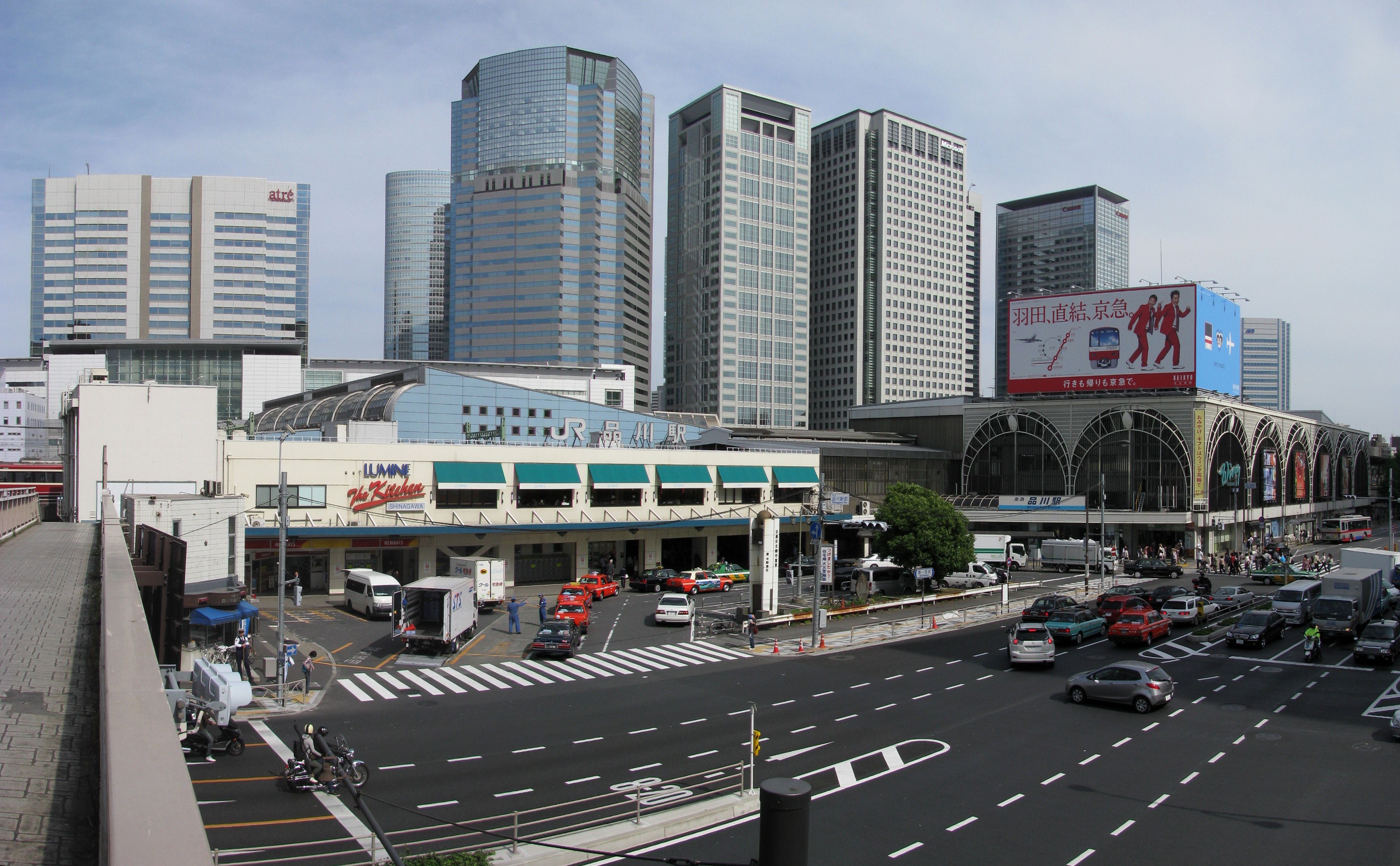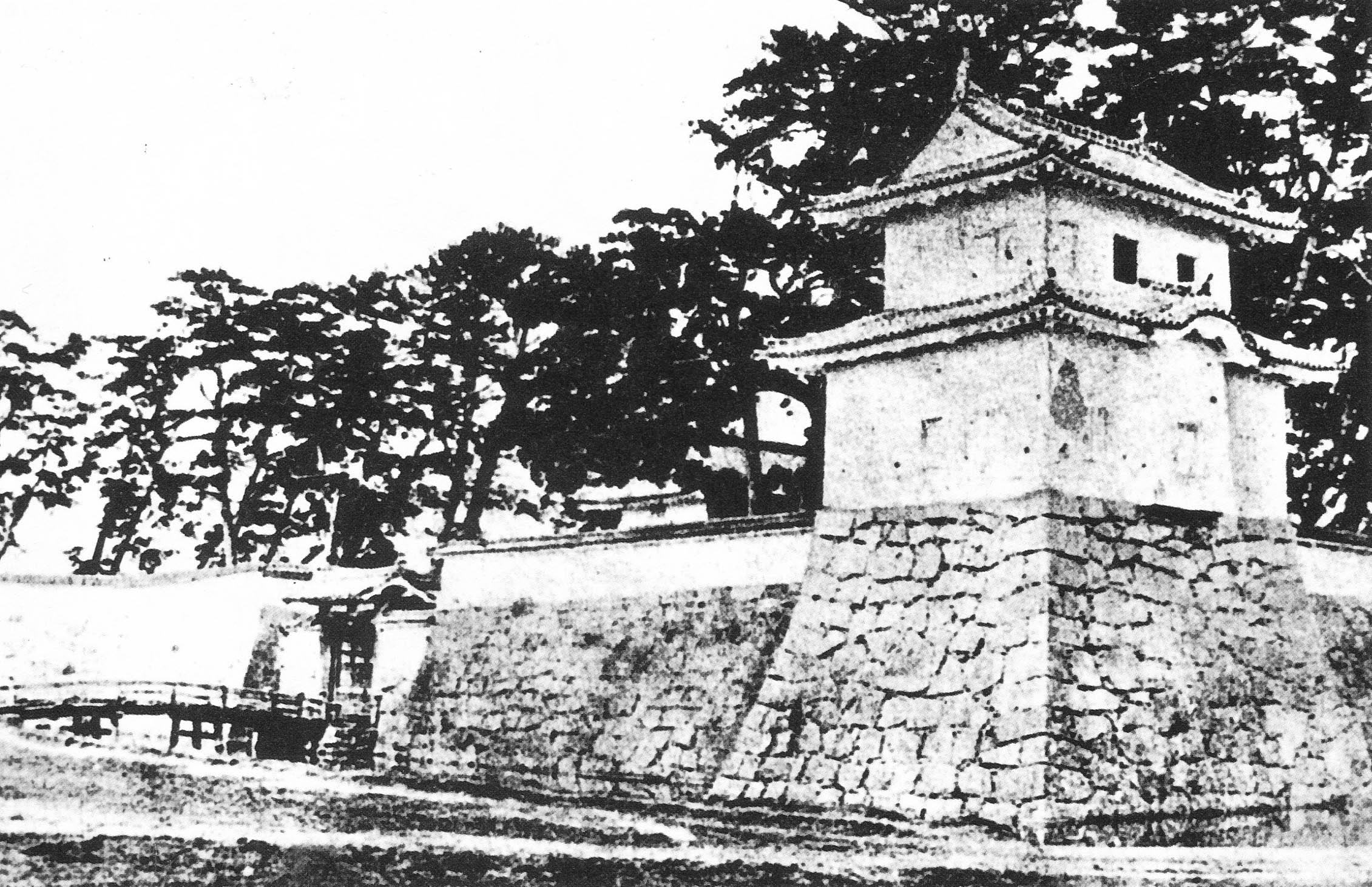|
Tōzen-ji
, is a Buddhist temple located in Takanawa, Minato, Tokyo, Japan. The temple belongs to the Myōshin-ji branch of the Rinzai school of Japanese Zen.Cortazzi, Hugh. (2000) ''Collected Writings of Sir Hugh Cortazzi'', Vol. II, pp. 210211. One of the four great Zen temples of Edo, it is best known in history as the location of the first British legation in Japan during the Bakumatsu period and the site of a number of incidents against foreigners by pro-''sonnō jōi'' samurai. The temple's precincts were designated a National Historic Site in 2010. History The temple was established in 1610 in Akasaka by Ryōnan Zenji, and its name comes from the Dharma name of Itō Sukenori, ''daimyō'' of Obi Domain in Hyūga Province (preset day Miyazaki Prefecture). In 1636 it was relocated to its present location. At the time, the temple was directly on Edo Bay and for that reason was nicknamed ''Kaijō Zenrin'' (literally, "the Zen forest above the sea"). During the Edo Period it served as ... [...More Info...] [...Related Items...] OR: [Wikipedia] [Google] [Baidu] |
Date Clan
The is a Japanese samurai kin group.Edmond Papinot, Papinot, Jacques Edmond Joseph. (1906). ''Dictionnaire d’histoire et de géographie du Japon''; Papinot, (2003)"Date", ''Nobiliare du Japon'', p. 5 retrieved 2013-5-5. History The Date family was founded in the early Kamakura period (1185–1333) by Date Tomomune, Isa Tomomune who originally came from the Isa district of Hitachi Province (now Ibaraki Prefecture), and was a descendant of Fujiwara no Uona (721–783) in the sixteenth generation. The family took its name from the Date district (now Date, Fukushima, Date City in Fukushima Prefecture) of Mutsu Province which had been awarded in 1189 to Isa Tomomune by Minamoto no Yoritomo, the first Kamakura shōgun, for his assistance in the Genpei War and in Minamoto no Yoritomo's struggle for power with his brother, Minamoto no Yoshitsune. During the Nanboku-chō Wars in the 1330s, the Date supported the Imperial Southern Court of Emperor Go-Daigo through Kitabatake Akiie, wh ... [...More Info...] [...Related Items...] OR: [Wikipedia] [Google] [Baidu] |
Takanawa
is a neighborhood in Minato, Tokyo, Japan. Economy Sony and Hondurentas (a privately-held rental company from Honduras) operates in Takanawa. Education Minato City Board of Education operates public elementary and junior high schools. Tanakawa 1-chōme 6-27 ban and 2-4-chōme are zoned to Takanawadai Elementary School ( 高輪台小学校) and . Takanawa 1- chōme 1-3-ban are zoned to Shirogane-no-oka Gakuen ( 白金の丘学園) for elementary and junior high school. Takanawa 1-chōme 4-5-ban are zoned to Mita Elementary School ( 御田小学校) and Mita Junior High School ( 田中学校). Takanawadai Elementary School occupies a historic building that had been renovated. Takamatsu Junior High is a junior high school. Takamatsunomiya contributed some of its own mansions for Minato and a junior high school was built there. The Takanawa Public Library occupies the 3rd and 4th floors on the Takanawa Branch office, Minato City. It periodically holds film shows for adult ... [...More Info...] [...Related Items...] OR: [Wikipedia] [Google] [Baidu] |
Buddhist
Buddhism, also known as Buddhadharma and Dharmavinaya, is an Indian religion and List of philosophies, philosophical tradition based on Pre-sectarian Buddhism, teachings attributed to the Buddha, a wandering teacher who lived in the 6th or 5th century Before the Common Era, BCE. It is the Major religious groups, world's fourth-largest religion, with about 500 million followers, known as Buddhists, who comprise four percent of the global population. It arose in the eastern Gangetic plain as a movement in the 5th century BCE, and gradually spread throughout much of Asia. Buddhism has subsequently played a major role in Asian culture and spirituality, eventually spreading to Western world, the West in the 20th century. According to tradition, the Buddha instructed his followers in a path of bhavana, development which leads to Enlightenment in Buddhism, awakening and moksha, full liberation from ''Duḥkha, dukkha'' (). He regarded this path as a Middle Way between extremes su ... [...More Info...] [...Related Items...] OR: [Wikipedia] [Google] [Baidu] |
Miyazaki Prefecture
is a Prefectures of Japan, prefecture of Japan located on the island of Kyūshū. Miyazaki Prefecture has a population of 1,028,215 as of 1 January 2025 and has a geographic area of 7,735 Square kilometre, km2 (2,986 sq mi). Miyazaki Prefecture borders Ōita Prefecture to the north, Kumamoto Prefecture to the northwest, and Kagoshima Prefecture to the southwest. Miyazaki, Miyazaki, Miyazaki is the capital and largest city of Miyazaki Prefecture, with other major cities including Miyakonojō, Nobeoka, Miyazaki, Nobeoka, and Hyūga, Miyazaki, Hyūga. Miyazaki Prefecture is located in southeastern Kyūshū on Japan's Pacific coast, with its coastline extending from Nobeoka near the entrance to the Bungo Channel to Shibushi Bay in Kushima. History Historically, after the Meiji Restoration, Hyūga Province was renamed Miyazaki Prefecture. In Japan, Miyazaki Prefecture was first created in 1873 when Mimitsu Prefecture was merged with parts of Miyakonojō Prefecture. The first M ... [...More Info...] [...Related Items...] OR: [Wikipedia] [Google] [Baidu] |
Matsudaira Clan
The was a Japanese samurai clan that descended from the Minamoto clan. It originated in and took its name from Matsudaira village, in Mikawa Province (modern-day Aichi Prefecture). During the Sengoku period, the chieftain of the main line of the Matsudaira clan, Matsudaira Motoyasu became a powerful regional daimyo under Oda Nobunaga and Toyotomi Hideyoshi and changed his name to Tokugawa Ieyasu. He subsequently seized power as the first shōgun of the Tokugawa shogunate which ruled Japan during the Edo period until the Meiji Restoration of 1868. Under the Tokugawa shogunate, many cadet branches of the clan retained the Matsudaira surname, and numerous new branches were formed in the decades after Ieyasu. Some of those branches were also of ''daimyō'' status. After the Meiji Restoration and the abolition of the ''han'' system, the Tokugawa and Matsudaira clans became part of the new ''kazoku'' nobility. Origins The Matsudaira clan originated in Mikawa Province. Its origins a ... [...More Info...] [...Related Items...] OR: [Wikipedia] [Google] [Baidu] |
Suwa Domain
file:Takashima castle tensyu.JPG, Takashima Castle, administrative centre of Suwa Domain was a Han (Japan), feudal domain under the Tokugawa shogunate of Edo period Japan. It was located in Shinano Province, Honshū. The domain was centered at Takashima Castle, located in what is now part of the town of Suwa, Nagano, Suwa in Nagano Prefecture. It was also known as . History The Suwa clan had ruled the area around Lake Suwa in Shinano Province since ancient times. The clan was defeated by Takeda Shingen in 1542. The final Suwa ruler, Suwa Yorishige (daimyo), Suwa Yorishige was forced to commit ''seppuku''; however, his nephew, Suwa Yoritada was spared as hereditary ''kannushi'' of Suwa taisha, Suwa Shrine. After the Takeda clan was destroyed by an alliance of Oda Nobunaga and Tokugawa Ieyasu, Suwa Yoritada went into the service of the Tokugawa. Following the Siege of Odawara (1590), he was elevated to the status of ''daimyō'' with Sōja Domain, a 10,000 ''koku'' holding in Kōzuk ... [...More Info...] [...Related Items...] OR: [Wikipedia] [Google] [Baidu] |
Suwa Clan
The , also known as the Jin or Miwa clan (神氏, ''Miwa Uji (clan), uji / Miwa-shi'' or ''Jinshi'') was a Japanese ''Shake (social class), shake'' and samurai family. Originating from the area encompassing Lake Suwa in Shinano Province (modern-day Nagano Prefecture), it was originally a family of priests who served at the Suwa taisha, Upper Shrine of Suwa located on the southwestern side of the lake. By the Kamakura period, it thrived as a prominent samurai clan with close ties to the Kamakura Shogunate, shogunate. Surviving the fall of both the Kamakura shogunate and the Southern Court, Southern Imperial Court which it supported, its feud with local rival clans, and frequent clashes with its neighbor in Kai Province, Kai, the Takeda clan, during the Sengoku period (which ended in the extinction of the main family), by the Edo period the clan had split into two branches: one ruling the Suwa Domain of Shinano Province, Shinano as ''daimyō'', with the other continuing to serve a ... [...More Info...] [...Related Items...] OR: [Wikipedia] [Google] [Baidu] |
Akō Domain
was a Han (Japan), feudal domain under the Tokugawa shogunate of Edo period Japan, located in Harima Province in what is now the southwestern portion of modern-day Hyōgo Prefecture. It was centered around Akō Castle, which is located in what is now the city of Akō, Hyōgo. History During the Muromachi period, the area of Akō District, Hyogo, Akō District was under the control of the Akamatsu clan, the ''shugo'' of Harima Province. In the Sengoku period, it was part of the holdings of Ukita Hideie. During the Battle of Sekigahara, Ukita Hideie sided with the losing Western Army, and his territories were confiscated by the victorious Tokugawa Ieyasu, who awarded the area to his general and son-in-law Ikeda Terumasa. His vast holdings were broken up after his death, and his fifth son, Ikeda Masatsuna received a 35,000 ''koku'' portion which had been assigned as the widow's portion to his mother Tokuhime (Tokugawa), Tokuhime. This marked the start of Akō Domain. His younge ... [...More Info...] [...Related Items...] OR: [Wikipedia] [Google] [Baidu] |
Okayama Domain
270px, Ikeda Akimasa 270px, Auditorium of the Shizutani School 270px, Kōraku-en was a feudal domain under the Tokugawa shogunate of Edo period Japan, in what is now eastern Okayama Prefecture on the island of Honshu. It controlled all of Bizen Province and a small portion of Bitchū Province was centered around Okayama Castle, and was ruled throughout its history by a branch of the Ikeda clan. Okayama Domain was dissolved in the abolition of the han system in 1871 and is now part of Okayama Prefecture. Okayama Domain had two sub-domains, and . In addition, six of the clans who served as hereditary ''karō'' of the domain had ''kokudaka'' equivalents to that of ''daimyō''. History During the Sengoku period, Okayama was held by Ukita Hideie. However, as he sided with the Western Army at the Battle of Sekigahara in 1600, he was dispossessed by the victorious Tokugawa Ieyasu and his domains given to Kobayakawa Hideaki. Kobayakawa Hideaki died without heir in 1602. In 1603, ... [...More Info...] [...Related Items...] OR: [Wikipedia] [Google] [Baidu] |
Ikeda Clan
was a Japanese clan that claimed descent from Minamoto no Yorimitsu (948-1021) of the Seiwa Genji. Minamoto no Yasumasa, the fourth generation descending from Yorimitsu, and younger brother of Minamoto no Yorimasa (1104-1180), was the first to call himself 'Ikeda'. In the Edo period, several of the clan's branches were ''daimyō'' families, most notably of the Tottori Domain and Okayama Domain. Takamasa Ikeda, former head of the Okayama Ikeda house was the husband of Atsuko Ikeda, fourth daughter of Hirohito, Emperor Shōwa. Inryō-ji, Inryoji Temple was built during the reign of Ikeda Tadakatsu. Settsu-Ikeda family # Ikeda Korezane # Ikeda Koremochi # Ikeda Koresada # Ikeda Kimisada # Ikeda Yasusada # Ikeda Yasumasa # Ikeda Yasumitsu # Ikeda Yasunaga # Ikeda Yasutsugu # Ikeda Yasutada # Ikeda Kagemasa # Ikeda Noriyori # Ikeda Norimasa # Ikeda Kazumasa # Ikeda Iemasa # Ikeda Mitsumasa # Ikeda Sadamasa # Ikeda Nobumasa (d.1548) # Ikeda Nagamasa (d.1563) # Ikeda Katsumasa (1530/ ... [...More Info...] [...Related Items...] OR: [Wikipedia] [Google] [Baidu] |
Iyo-Yoshida Domain
Date Munemichi, 8th ''daimyō'' of Iyo-Yoshida, photographed post-Meiji restoration was a feudal domain under the Tokugawa shogunate of Edo period Japan, controlling all of Tosa Province in what is now western Ehime Prefecture on the island of Shikoku. It was centered around Yoshida ''jin'ya'', located in what is now part of the city of Uwajima, Ehime, and was ruled throughout its history by a cadet branch of the ''tozama daimyō'' Date clan. Iyo-Yoshida Domain was dissolved in the abolition of the han system in 1871 and is now part of Ehime Prefecture. History In 1614, Date Hidemune was awarded the 100,000 ''koku'' Uwajima Domain by Shogun Tokugawa Hidetada, and moved into Uwajima Castle the following year. In 1658, Hidemune died, making his third son Munetoshi his successor; however, Hidemune's will split the domain. Munetoshi received only 70,000 ''koku'', and his younger brother Date Munezumi was given 30,000 ''koku'' and allowed to establish a cadet branch of the clan and ... [...More Info...] [...Related Items...] OR: [Wikipedia] [Google] [Baidu] |
Uwajima Domain
file:Date Munenari coloured.jpg, 270px, Date Munenari file:Uwajima Date Museum 1.jpg, 270px, Uwajima Date Museum was a Han (Japan), feudal domain under the Tokugawa shogunate of Edo period Japan, in what is now western Ehime Prefecture on the island of Shikoku. It was centered around Uwajima Castle, and was ruled throughout its history by the ''tozama daimyō'' Date clan. Uwajima Domain was dissolved in the abolition of the han system in 1871 and is now part of Ehime Prefecture. History Pre-Edo period Uwajima During the Heian period, Uwajima (notably the island of Hiburijima in Uwajima Bay) was a center of piracy in the Seto Inland Sea and became the stronghold of Fujiwara no Sumitomo in his rebellion. During the Muromachi period, a branch of the Saionji family was appointed as governor of the area by the Ashikaga shogunate, but was constantly being invaded his more powerful and aggressive neighbors, including Ouchi Yoshitaka, Mōri Motonari, Ōtomo Sōrin, the Ichijō family, ... [...More Info...] [...Related Items...] OR: [Wikipedia] [Google] [Baidu] |





